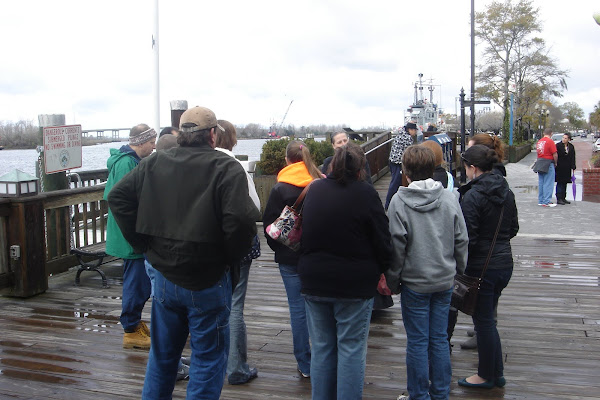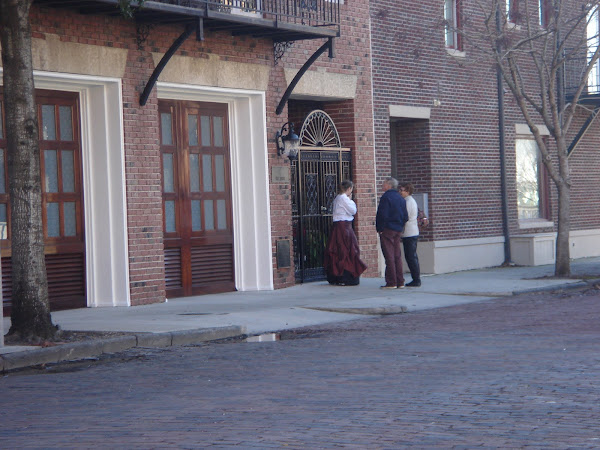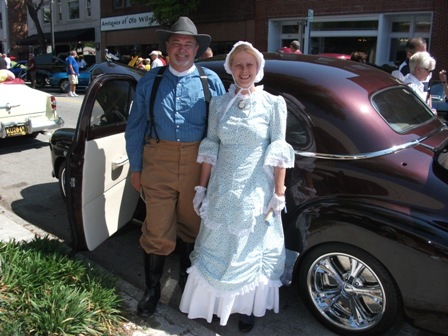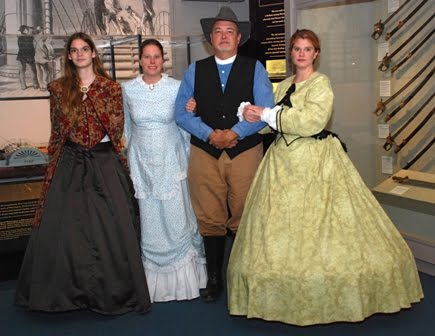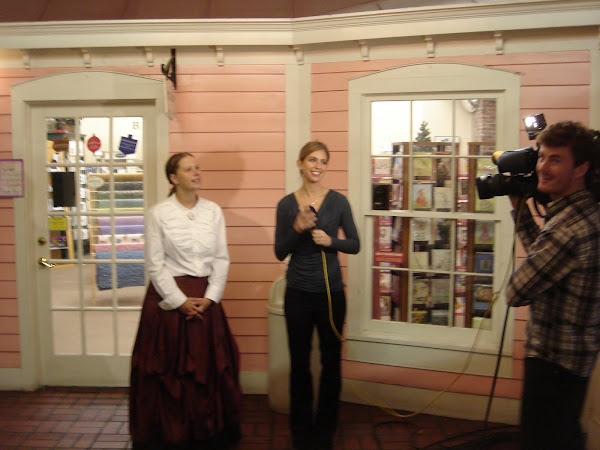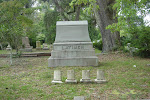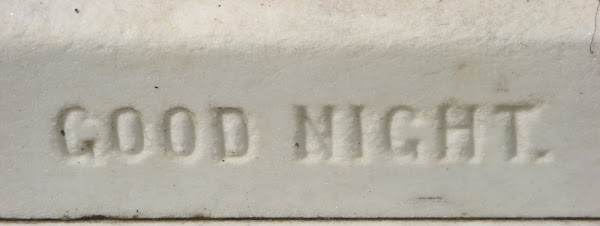e mail us @ lori.touroldwilmington@gmail.com
History Walking Tours
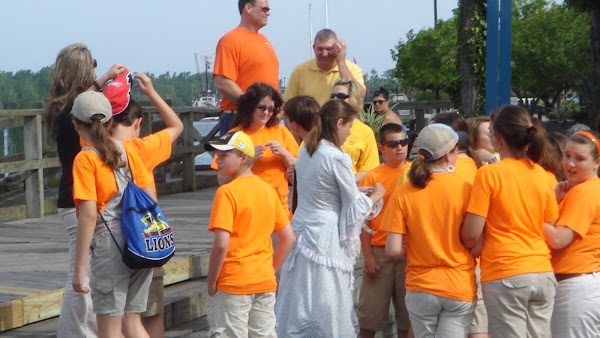
Open Year Round
3rd Graders on Tour!

History Walking Tour for all ages!
Getting away with murder during the Civil War Part Three
Getting away with murder! Part Three
The battlefield claimed many a brave officer, but there were a few others who met not-quite-so-honorable ends.
The battlefield claimed many a brave officer, but there were a few others who met not-quite-so-honorable ends.
The Civil War was fought in an age when flair counted for nearly as much in society as character—and a number of generals outdid themselves. The North had Custer. With his starred sailor's blouse, silk cravat and broad-brimmed hat, the "boy general" cut an unmistakable figure. But for sheer flamboyance, no one outdid the soldiers of the romantic South. Many, including J.E.B. Stuart, John Hunt Morgan and the diminutive "Gray Ghost" John Singleton Mosby, affected the appearance of the beau sabreur. George Pickett's curly locks were so heavily perfumed that the scent was said to precede him into a room. But the pantheon of cavalier dandies would not be complete without General Earl Van Dorn. What he lacked in height—he stood only 5 feet 5 inches tall—he more than compensated for in overweening self-satisfaction. A fine horseman and self-styled poet and painter, Van Dorn cultivated his appearance to reflect his talents. A photograph of Van Dorn shows a reasonably handsome man with styled pomaded hair, a flowing mustache and collar, and velvet cape and waistcoat. The portrait suggests Lord Byron rather than a professional soldier—an image cultivated to further his other main interest: Married though he was, Van Dorn loved the ladies, and apparently it didn't matter whether they were already spoken for. One Vicksburg
As a soldier, Van Dorn proved something of a disappointment. His military career had started brightly enough. He fought in Mexico Florida , and the Comanches in Texas and the Indian Territory . He was wounded four more times—twice seriously—by Comanche arrows.
Van Dorn resigned from the U.S. Army when his native Mississippi left the Union . In April 1861, as commander of the Confederate forces in Texas, he so impressed the South's War Department that they brought him back to Richmond and gave him command of Virginia's cavalry—the pride of the Confederacy. By the turn of the year, he was a major general in charge of the new Trans-Mississippi District. Earl Van Dorn's star was clearly on the rise.
Soon, however, cracks began to appear in the plaster. Van Dorn played a significant part in the Southern defeat at Pea Ridge in early 1862. It was one of the rare instances in which Rebel forces outnumbered Yankee troops and lost. While Van Dorn was a fine cavalry officer, strategy was not his forte, and he was proving incapable of handling high command. Nor could he accept responsibility for his failures. In his official report, Van Dorn excused his role in the defeat by claiming "a series of accidents entirely unforeseen and not under my control and a badly-disciplined army defeated my intentions." Writing to Secretary of War Judah P. Benjamin, Van Dorn indulged in semantics: "I was not defeated, but only foiled in my intentions." So poorly did he perform at the Second Battle of Corinth that he was accused of drunkenness, negligence, disregard for his men's welfare and failure to adequately plan his charges. After his costly defeats at Pea Ridge and Corinth
Meanwhile, Van Dorn's extracurricular activities did not go unattended. Assigned to command a cavalry division in the Army of Tennessee in early 1863, he made his headquarters in Spring Hill , Tenn.
The details of the killing are shrouded in mystery. Some versions have Van Dorn writing a pass for Dr. Peters when he was shot. Other versions suggest there had been no illicit affair, and Peters was simply a Federal sympathizer acting for political reasons or profit. In any case, the shot was instantly fatal, depriving the Confederacy of a decent cavalry officer, Mrs. Van Dorn of her husband, Jessie Peters of a lover and the general himself of the opportunity to redeem his reputation in the field.
Peters was arrested but escaped prosecution, claiming Van Dorn had "violated the sanctity of his home." This was an offense the South could not forgive, and the Southern press was brutal in its condemnation. "It is a happy riddance," the Atlanta Confederacy trumpeted. "He was unfit to live." And according to the Montgomery Weekly Advertiser, "The impression around Spring Hill is that Van Dorn was rightly killed." The Advertiser goes on to say that Mrs. Peters—on hearing of Van Dorn's death—exclaimed that "she was a widow indeed, as her husband had fled, and her sweetheart was dead." The couple did, in fact, divorce, but later reconciled.
Throughout the war, there was no lack of enmity between generals—especially among the Confederates. Thin skins, the constant stress of war and the cultural expectation of manly conduct ensured that honor was easily offended.
Conflicts generally stopped short of bloodshed, but the possibility of mortal confrontation was never far removed. In a time when the horror of war was everywhere, and when violent death was an accepted part of daily life, it was inevitable that the fine line between defensible conduct and homicide would be crossed. Given the circumstances, it is not remarkable that three generals were murdered; it is, however, more than curious that none of the murderers—for murderers they clearly were—was ever punished.
· Read more inAmerica's Civil War magazine
Subscribe online and save nearly 40%!!!













